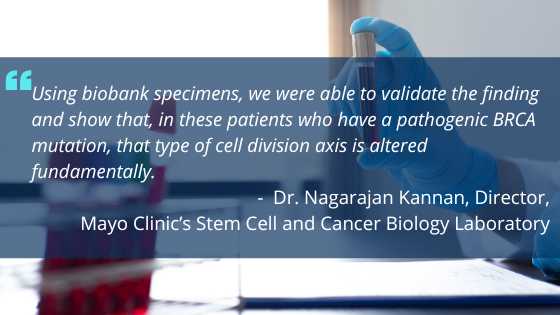Mayo Clinic’s Living Breast Biobank has proved invaluable in a recent breakthrough study that demonstrates a novel mechanism through which female carriers of the BRCA1 gene may be at increased risk for breast cancer. According to the study, this is because the gene contributes to poorly organized divisions of mammary progenitor cells.

“For the first time, it was possible to recreate various pathogenic BRCA1 mutations in a cell line and track living cells during their division to understand their influence on the cell division axis,” says Nagarajan Kannan, Ph.D., director of Mayo Clinic’s Stem Cell and Cancer Biology Laboratory.
The discovery, made using cell lines, was then tested to see if the mechanism was true in patients who carried a mutant BRCA gene. That’s where the Living Breast Biobank came in. The discovery is part of collaborative research activity to understand the role of BRCA1 in mammary progenitor cell division. The collaboration was founded more than a decade ago by Dr. Kannan; lead investigator Christopher Maxwell, Ph.D., a cancer cell biologist from the University of British Columbia, Canada; and Connie Eaves, Ph.D., a preeminent stem cell scientist at the Terry Fox Laboratory in Vancouver, British Columbia.
Click to read more.
